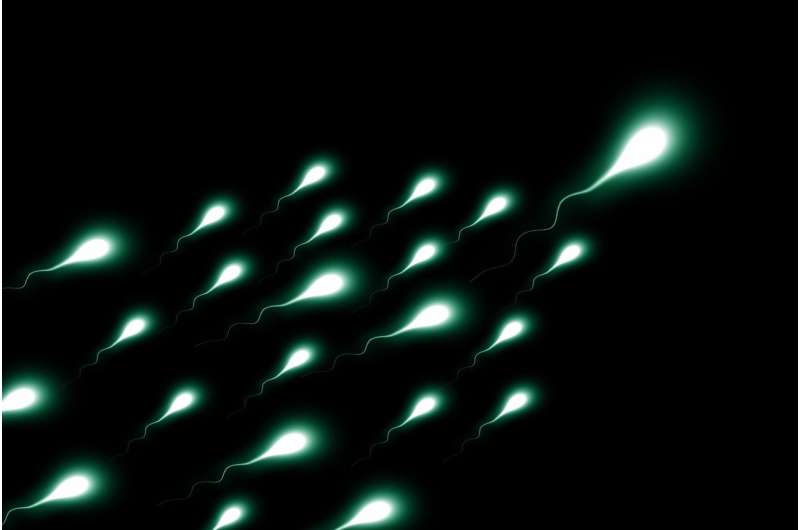Sperm development linked to testicular cancer


Testicular cancer is the most common type of cancer to affect men between the ages of 15 and 49, and around 95% of these cases are caused by testicular germ cell tumors. Although testicular germ cell tumors typically manifest after puberty, problems in the embryonic development of germ cells can transform them into cancer cells that form tumors later in life.
In the embryo, germ cells initially have the potential to form many different cell types, a characteristic called pluripotency. Normally, germ cells lose this ability as embryonic development progresses and they become restricted to only form sex cells—sperm in males and eggs in females—in a process known as sex determination. Male sex determination also coincides with the embryonic period when the cancer cells that form testicular germ cell tumors can develop.
As Dr. Jason Heaney, Associate Professor at the Department of Molecular and Human Genetics at Baylor College of Medicine revealed, the timing between cancer cell formation and sex determination is more than just coincidental: “previous work from our lab and others indicated that defects in this sex-specific switch may play a central role in facilitating the initiation of testicular germ cell tumors. In this study, we set out to test whether testicular germ cell tumors arise from germ cells that do not begin the sex-specific differentiation process and retain features of pluripotent cells.”
To test this hypothesis, Dr. Heaney together with Dr. Nicholas Webster and team explored whether a gene called Nanos2, which is needed for sex-determination, also prevented embryonic cancer cells developing in mice. “NANOS2 plays a key role in the sex-specific development of embryonic germ cells by suppressing the female (egg) fate and promoting the male (sperm) fate,” explained Dr. Heaney.
Using a strain of mice that spontaneously develop germ cell tumors, the researchers showed that some germ cells lacked NANOS2. Not only did the NANOS2-deficient germ cells fail to mature into sperm, but they remained pluripotent and, crucially, were more likely to transform into embryonic cancer cells. The scientists also characterized the NANOS2-deficient germ cells and uncovered important changes in cell behavior, which could be used to identify and treat cancer cells in the future. “Our work reveals changes in gene expression when germ cells transform into cancer cells that suggest alterations in metabolism and cell division, which could be used for targeted therapies,” said Dr. Heaney.
Source: Read Full Article